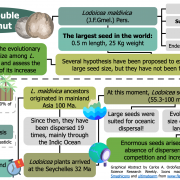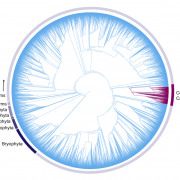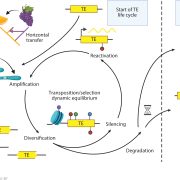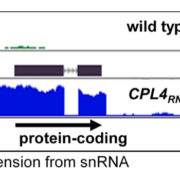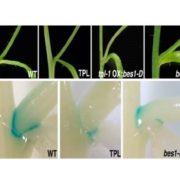Regulatory small RNAs responsible for natural variation in snapdragon flower color patterning ($)
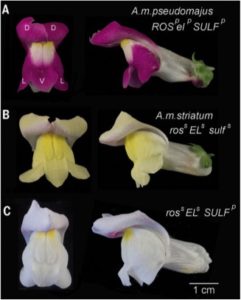 Flower color pattern is a major trait influencing pollinator attraction, but underlying regulatory mechanisms are still poorly understood. Using co-existing Snapdragon subspecies displaying different flower pigmentation motifs, Bradley et al. investigated the molecular basis of flower color patterning. They identified an inverted gene duplication producing small RNAs targeting a gene involved in the biosynthesis of a yellow pigment. This translates to a modification of the color pattern at the pollinator entry site. Interestingly, the inverted duplication is found in only one of the co-existing subspecies, and analysis of the allele frequency suggests that this allele is subjected to active selection in their local habitat. The authors propose that occurrence of such dynamic and flexible regulatory mechanisms provides an important alternative to transcription factors for generating diversity in phenotypes in natural environments. (Summary by Matthias Benoit) Science 10.1126/science.aao3526
Flower color pattern is a major trait influencing pollinator attraction, but underlying regulatory mechanisms are still poorly understood. Using co-existing Snapdragon subspecies displaying different flower pigmentation motifs, Bradley et al. investigated the molecular basis of flower color patterning. They identified an inverted gene duplication producing small RNAs targeting a gene involved in the biosynthesis of a yellow pigment. This translates to a modification of the color pattern at the pollinator entry site. Interestingly, the inverted duplication is found in only one of the co-existing subspecies, and analysis of the allele frequency suggests that this allele is subjected to active selection in their local habitat. The authors propose that occurrence of such dynamic and flexible regulatory mechanisms provides an important alternative to transcription factors for generating diversity in phenotypes in natural environments. (Summary by Matthias Benoit) Science 10.1126/science.aao3526


